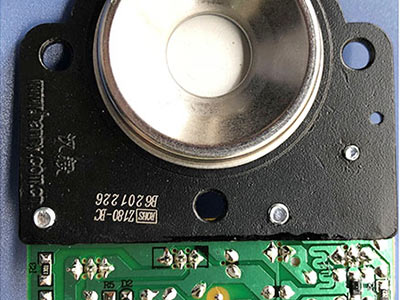Definition and classification
Definition: Humidifier converts water into vapor or atomized particles by specific technical means and releases them into the air, thereby increasing the humidity in the air.
Classification: According to the different principles of humidification, humidifiers are mainly divided into ultrasonic humidifiers, pure humidifiers (direct evaporation type), electric heating humidifiers, etc.
Two, working principle
Ultrasonic humidifier: The use of ultrasonic generator to produce high-frequency vibration, the water molecules shake and disperse into tiny water droplets, and then through the fan or airflow to release these tiny water droplets into the air. This principle can produce a fine mist of water, also known as a cold mist humidifier.
Pure humidifier: through molecular sieve evaporation technology, remove calcium and magnesium ions in water to solve the problem of "white powder". At the same time, the air is washed through the water curtain, and the bacteria, dust and particles in the air can be filtered and purified while humidifying.
Electric humidifier: the water is heated to 100 ° C in the heating body, generating steam, and the steam is sent out with the motor. This way humidification effect is good, but the energy consumption is large, and can not dry burn, the safety factor is low.

Ultrasonic humidifier: humidification strength is large and uniform, power consumption is small, long service life, both medical atomization, cold compress bath surface, cleaning jewelry and other functions.
Pure humidifier: no "white powder" phenomenon, no scaling, small power, with air circulation system, can filter the air and kill bacteria, very suitable for families with the elderly and children.
Electric humidifier: the humidification effect is good, the water temperature is high, will not produce bacteria and scale, but the power consumption is large, the noise is loud, and may cause the indoor temperature is too high.
Four, use scenarios
Humidifiers are widely used in homes, offices, conference rooms, restaurants and other places. In winter or air-conditioned rooms, because the air humidity is low, using a humidifier can effectively increase the indoor humidity, keep the air moist, avoid dry skin, throat discomfort and other problems. At the same time, the humidifier can also purify the air, reduce dust and odor in the air, and improve indoor air quality.
Five, precautions
Adjust the humidity properly: When using a humidifier, adjust the humidity properly according to the indoor environment and personal requirements to avoid other problems caused by excessive humidity.
Regular cleaning: In order to maintain the performance and hygiene of the humidifier, the humidifier should be cleaned regularly to remove the dirt, bacteria, scale and so on in the water tank and filter.
Choose the right water quality: Different types of humidifiers have different requirements for water quality. In general, ultrasonic and nano-level atomizing humidifiers are best to use pure water or softened water to avoid the phenomenon of "white powder" and bacterial growth.
To sum up, the humidifier is a practical and versatile household appliance that brings comfort and health to people's lives by increasing indoor humidity and purifying the air. When selecting and using a humidifier, pay attention to its type, features, application scenarios, and precautions.About
Company Profile Corporate imageApplication CasesProduct
News
Company News Industry News Common problem+86 769-81555631-808
Monday to Sunday 8:30-21:30
(Welcome to call us for consultation)
 App
App